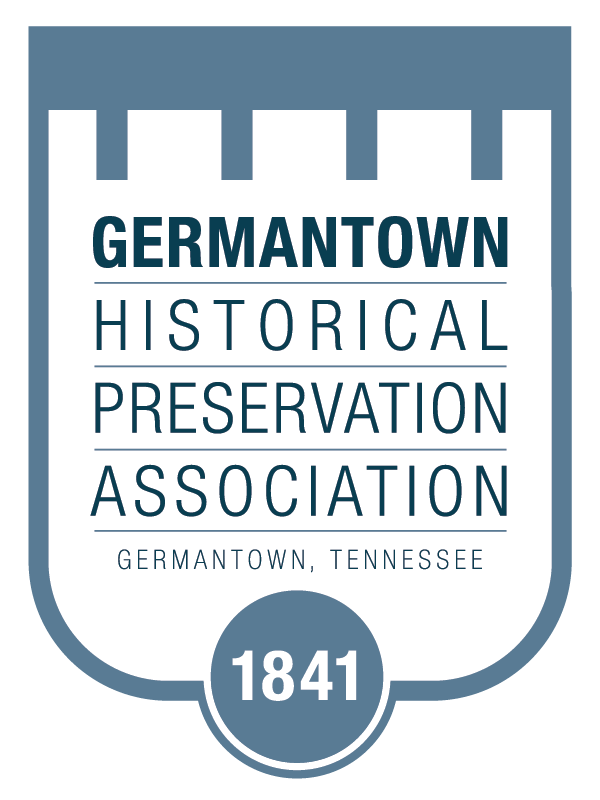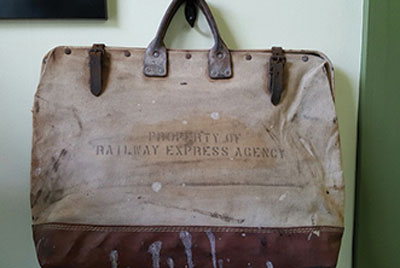
Railroad Express Agency
On one of the Walking Tours of the Old Germantown District, someone pointed out a red and white, diamond-shaped sign on the east wall of the Depot. The sign contained the initials REA and I did not have a clue what that meant. Betty Canestrari knew the answer because her father had worked for the company.
Fifty years ago, we’d tell someone we’d send a package by Railway Express Agency or REA just as easily as we now say “I’ll UPS or FedEx it to you!”
Railway Express Agency or REA, as it was known, used one of the largest fleets of trucks, yet had no implication of trucking in its name; and owned and leased as many railroad cars as some of the largest railroad companies, yet was not a railroad in itself.
In the 1950s, green trucks would race out onto the aprons of airports, to waiting for DC-6 airliners with shipments of “Overnight Air.” Through the 1940s, Railway Express, with long strings of green refrigerator cars, would also haul oranges up from Florida to northeastern cities.
By the eve of the First World War, the large express companies had grown to the point that they operated over 30,000 offices in the U.S. Over 150,000 persons were employed in the express industry, and the express companies were the largest owner/operator of horse-drawn vehicles in the U.S., with over 30,000 horses in company stables.
When the federal government took control of the railroads during World War I, seven express companies controlled virtually all express movements in the U.S. These express agencies were merged into one giant company to be known as “American Railway Express Co.” After the war, it was deemed an impossible task to split the companies back to their original components. In 1920, the Interstate Commerce Commission (I.C.C.) approved continuing the unified operation of the American Railway Express.
Shortly after this time, however, the I.C.C. urged the railroads to begin operating their own express services. In 1929, 69 railroads organized the Railway Express Agency and purchased American Railway Express on March 1, 1929. Only the Southeastern Express Co., organized by the Southern Railway in 1921 as an independent express company, was not integrated at this time. By 1938 the Southeastern Express Co. was bought by REA.
Previously, in 1927, the airlines in the U.S. had started scheduled operations. An air-express service was formed modeled on the railroads’ American Railway Express. By the eve of World War II, second-morning service was being provided from New York to Los Angeles and San Francisco. Overnight service was offered between such points as New York and Chicago. REA functioned as a single entity to the customer, due to its contracts with the airlines and vast network of truck and rail depots.
The contract of 1929 between Railway Express Agency and the railroads ran until 1954, giving REA the exclusive rights to operate all express and related auxiliary services. A new contract took effect in 1954, continuing virtually all provisions of the 1929 contract, but REA revenues were beginning to drop and there was a lack of passenger trains upon which to operate all express services.
In the 1960s Southern Railway System discontinued carrying express shipments on their passenger trains. An official notice was also presented to the City of Germantown on May 13, 1968, that Southern Railway was filing a petition before the Tennessee Public Service Commission requesting permission to discontinue the Southern’s station at Germantown. The Board of Mayor and Aldermen agreed to file no objections to closing the station and a motion was approved to purchase or rent the Depot building if closed.
REA attempted to provide truck routes to replace the former rail service. In the mid-1960s Railway Express began containerized services in a number of pilot projects.
In spite of the emphasis on air and roadway operations, the title “REA Express” was maintained (although the acronym REA officially replaced the name Railway Express Agency).
By 1972, volume had dropped to the point that REA declared bankruptcy in February 1975. When REA was dismantled, United Parcel took up much of the business that REA was giving up.
In its peak, Railway Express Agency employed over 45,000 people in 23,000 offices and operated over 190,000 miles of railway lines. In addition, 14,000 miles of shipping lines, 91,000 miles of air routings and 15,000 miles of trucking lines were traveled by REA shipments. Seventeen thousand trucks, in conjunction with the above, handled over 300,000 separate shipments daily, ranging from small packages to carload-size lots.
Until 1975, REA did it all. The close-knit cooperation between Railway Express Agency (and the Post Office) and the railroads, served as a prelude to today’s express operations run by United Parcel Service (UPS), FedEx, DHL and others, in their air-express services.


